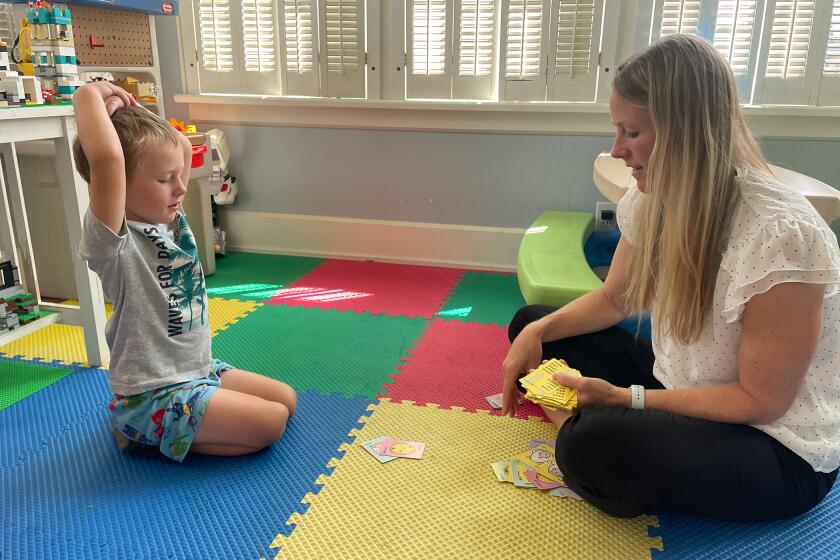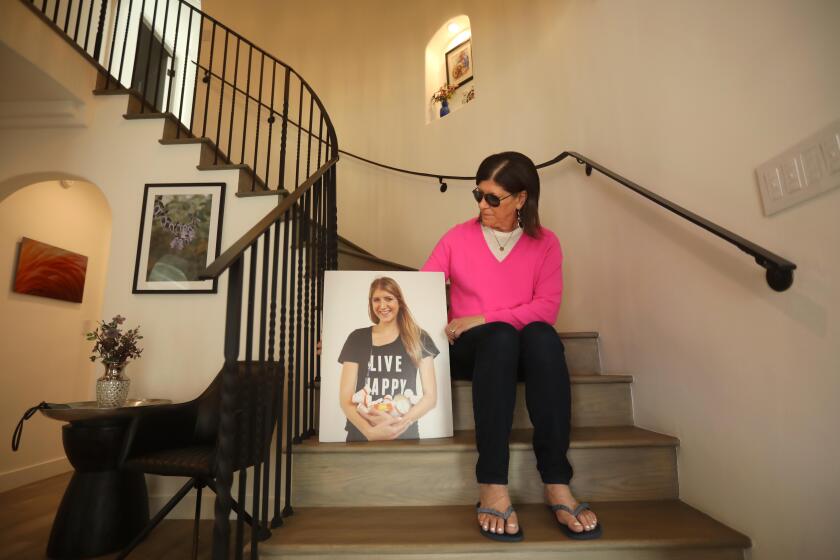SCIENCE / MEDICINE : Stroke Patient Offers Surprise Clues on How Brain Processes Words
Neuroscientists have long known the functions carried out by specific areas of the brain by studying patients with damage to certain areas of the brain and then determining what abilities--such as speech, movement, etc.--are lost because of the damage.
More recently, they have been moving beyond this simple mapping to the more interesting question of how the brain goes about its tasks.
Some unexpected clues to the processing of written language have now arisen from the study of a woman, the left side of whose brain was damaged by a stroke, impairing her ability to recognize the right side of words. Neurologists had previously thought that this kind of impairment was caused by defects in the sensory system resulting from the brain damage.
Through clever experiments, however, neuroscientist Alfonso Caramazza and speech pathologist Argye E. Hillis of Johns Hopkins University in Baltimore found that the woman made mistakes not on the right side of words per se, but with the ends of words, even when they were printed backwards or vertically downwards. Their studies indicate that the errors can be traced to the unexpected manner in which the brain normally recognizes printed words and are not caused by impairment of vision caused by the stroke.
Their conclusion, reported last week in the journal Nature, is that identification of words depends on an abstract, spatial representation of words, in the mind. This process requires not only that each letter in the word be represented in the brain by an abstract symbol, but also that the symbols must be combined in a specific three-dimensional relationship that may require both sides of the brain working together. Interruption of this process apparently caused the phenomenon seen in this patient.
Experimental psychologist Stuart Sutherland of the University of Sussex in England called the new report “an amazing finding” that is “both unexpected and informative.”
Hillis discovered the patient, identified only as N.G., at the HealthSouth Rehabilitation Corp. in Baltimore. N.G. is a 77-year-old woman who had massive damage to the left side of her brain as the result of a stroke. That damage created a condition called unilateral neglect.
Most people know by now that the left side of the brain controls the right side of the body and vice versa. A stroke on the right side of the brain therefore often produces paralysis of the left side of the body.
But unilateral neglect is a more complicated result of stroke caused by damage to a portion of the brain different from that involved in paralysis. Most often, it occurs on the right side of the brain, and “those patients tend to neglect the left side of their space,” Hillis said in a telephone interview. “They walk into walls on the left, forget to brush their hair on the left side, forget to put makeup on that side of the face and neglect to eat food on the left side of the plate.”
N.G. happens to be left-handed and her stroke occurred on the left side of the brain. It produced the normal manifestations of unilateral neglect, but it also produced some unusual effects in her manipulation of printed words.
Although she could speak articulately and understand spoken language perfectly well, in reading a word, N.G. would get the beginning of the word (the left-hand side) correct , but not the end. She might, for example, read “sparrow” as “space” or “house” as “hound.”
Caramazza and Hillis then tried a number of experiments in an attempt to figure out how the misperception worked. They found that she made the same mistake when the words were written backwards or vertically, indicating that the senses had nothing to do with the disorder.
Interestingly, she even made the same mistake when she first spelled the word out correctly. Shown the word “journal,” for instance, she might spell it out j-o-u-r-n-a-l and then read it as “journey.”
The unifying principle in each case is that the patient first had to construct a three-dimensional representation of the written word in her brain--actually “see” the word in her head--before recognizing it.
“But the main thing that (the study) tells us is that the internal representation of the word has spatial extent”--is three-dimensional--Hillis said. “That’s surprising.” The study also seems to show that, at least in some cases, recognition of printed words requires both sides of the brain to work together. That requirement had not been observed previously, Sussex’s Sutherland said.
The ability to understand words is clearly “a lot more complicated than we thought it was,” Hillis concluded.
EXAMPLES OF READING ERRORS * Attempt to draw clock * Errors in reading horizontal print: hound -- “house” stripe -- “strip” * Errors in backward spelling (reversed response in parantheses): illness -- “e-n-l-l-i” (illne) compare -- “d-r-a-p-m-o-c” (comard) * Errors in vertical reading: bl en -- “blemish” di ng ra -- “ran” ng



